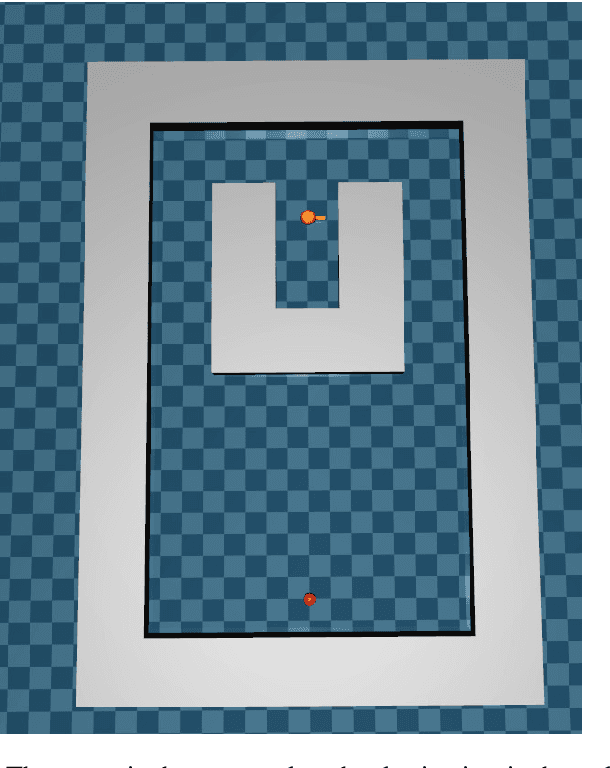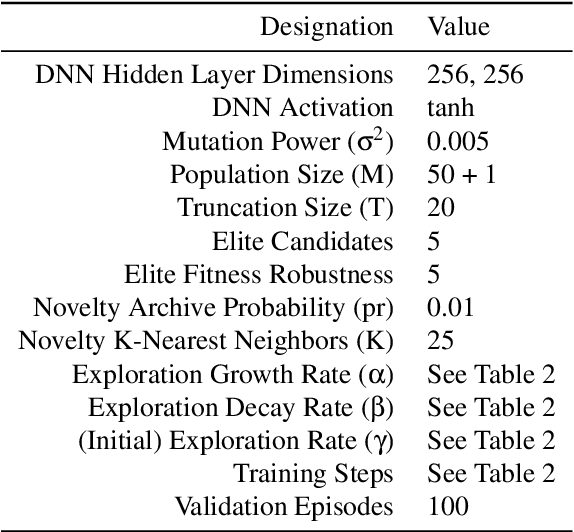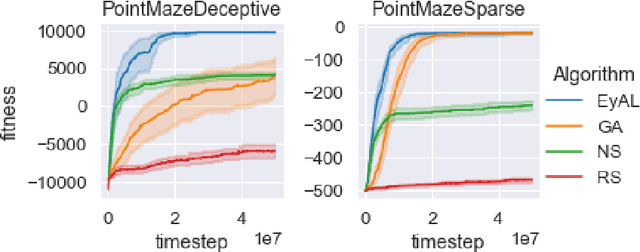Eyal Segal
A Melting Pot of Evolution and Learning
Jun 08, 2023Abstract:We survey eight recent works by our group, involving the successful blending of evolutionary algorithms with machine learning and deep learning: 1. Binary and Multinomial Classification through Evolutionary Symbolic Regression, 2. Classy Ensemble: A Novel Ensemble Algorithm for Classification, 3. EC-KitY: Evolutionary Computation Tool Kit in Python, 4. Evolution of Activation Functions for Deep Learning-Based Image Classification, 5. Adaptive Combination of a Genetic Algorithm and Novelty Search for Deep Neuroevolution, 6. An Evolutionary, Gradient-Free, Query-Efficient, Black-Box Algorithm for Generating Adversarial Instances in Deep Networks, 7. Foiling Explanations in Deep Neural Networks, 8. Patch of Invisibility: Naturalistic Black-Box Adversarial Attacks on Object Detectors.
Adaptive Combination of a Genetic Algorithm and Novelty Search for Deep Neuroevolution
Sep 08, 2022



Abstract:Evolutionary Computation (EC) has been shown to be able to quickly train Deep Artificial Neural Networks (DNNs) to solve Reinforcement Learning (RL) problems. While a Genetic Algorithm (GA) is well-suited for exploiting reward functions that are neither deceptive nor sparse, it struggles when the reward function is either of those. To that end, Novelty Search (NS) has been shown to be able to outperform gradient-following optimizers in some cases, while under-performing in others. We propose a new algorithm: Explore-Exploit $\gamma$-Adaptive Learner ($E^2\gamma AL$, or EyAL). By preserving a dynamically-sized niche of novelty-seeking agents, the algorithm manages to maintain population diversity, exploiting the reward signal when possible and exploring otherwise. The algorithm combines both the exploitation power of a GA and the exploration power of NS, while maintaining their simplicity and elegance. Our experiments show that EyAL outperforms NS in most scenarios, while being on par with a GA -- and in some scenarios it can outperform both. EyAL also allows the substitution of the exploiting component (GA) and the exploring component (NS) with other algorithms, e.g., Evolution Strategy and Surprise Search, thus opening the door for future research.
 Add to Chrome
Add to Chrome Add to Firefox
Add to Firefox Add to Edge
Add to Edge